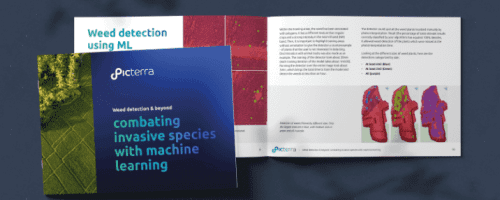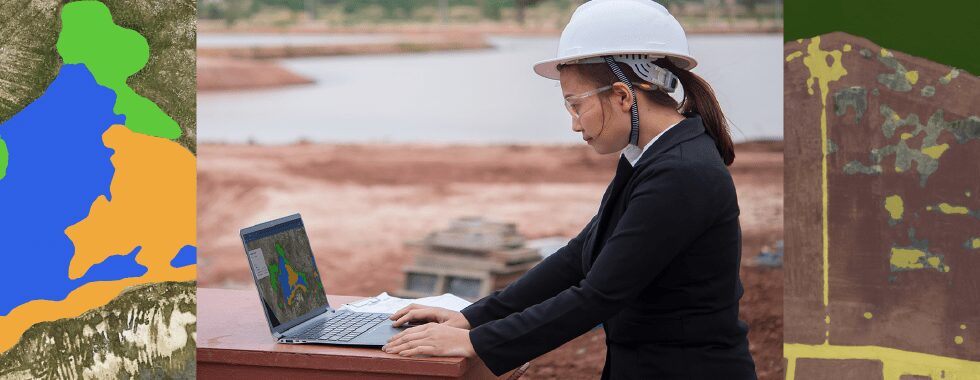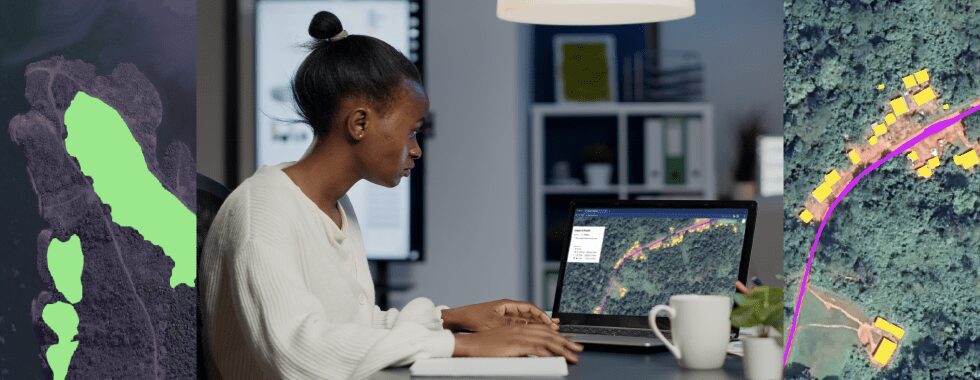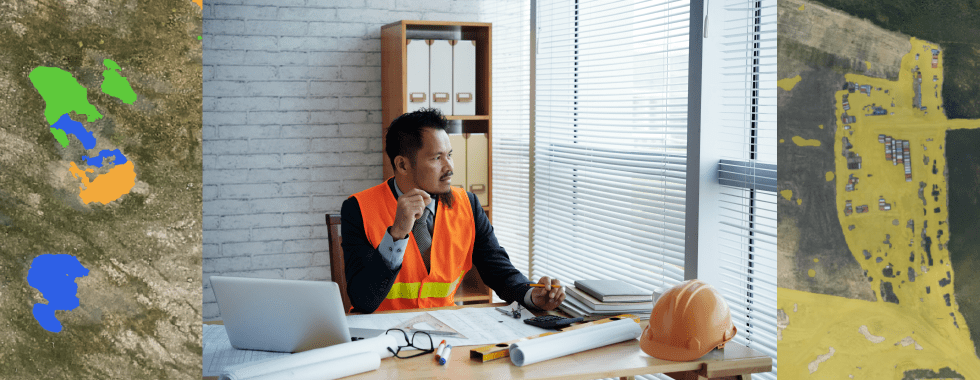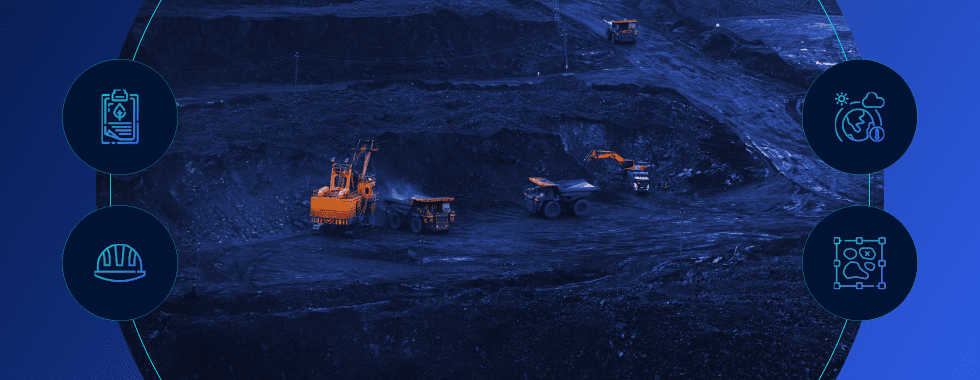Since its dawn 9000 years ago, agriculture has faced several revolutions, including the Neolithic Revolution, the transformation into the modern and productive system in Great Britain between the 17th and 18th centuries, and finally, the widespread use of artificial fertilizers and pesticides that started a few decades ago. Now, in the 21st century, we witness precision agriculture – the shift that has all the potential to be called the revolution.
What is precision agriculture?
Precision agriculture is all about quantification and measures that rationalize the actions. Its goal is to optimize returns on inputs while preserving resources. Modern agriculture involves the use of state-of-the-art technology, such as artificial intelligence, computer vision, unmanned aerial vehicles, remote sensing, GIS (Geographic Information Systems), and so on. In fact, the “ag tech” has already become a necessity rather than a novelty, as it addresses common challenges of modern growers, such as:
- Addressing the never-ending need for increasing agriculture productivity,
- Limiting the usage of artificial fertilizers and pesticides,
- Ensuring the efficient utilization of water resources,
- Dealing with weeds and harmful species in a sustainable way,
- Coping with climate change, natural disasters and soil erosion,
- Meeting rising demands for high quality and low-cost food.
At Picterra, we’re proud to make this shift possible by offering an AI-powered geospatial platform that is widely used in precision agriculture, specifically in counting crops, detecting dead or missing plants, invasive species, and weed. Getting access to aerial data has already been a game-changer, as there is no longer a need to conduct manual inspections. It allows for:
- Having a holistic view and measures,
- Efficient planning and controlling,
- Earlier intervention,
- Optimizing costs and environmental impact,
- Reducing manual work with focused in-site intervention,
- Applying local and precise fertilizer quantities,
- Accurate damage and insurance claims.
However, in many cases, it is not enough. Imagery needs interpretation and analyzing colossal amounts of data manually is still extremely time-consuming and prone to error. Here comes Picterra – all you need to do is to upload imagery and train a detector quickly and easily. Let’s have a look at a couple of real-life examples of how Picterra makes the difference.
Counting plants
There are many reasons to count plants. It gives the view of the field and allows spotting difficulties in order to react as fast as possible. However, conducting manual count is particularly tedious, time-consuming, and prone to errors. If you need to monitor the number of plants regularly, manual methods are completely inefficient. Picterra solves this issue. Below you can find an example of the detector that counts tomatoes that was built and trained in less than an hour. You can also access the project and see the results directly on our platform.
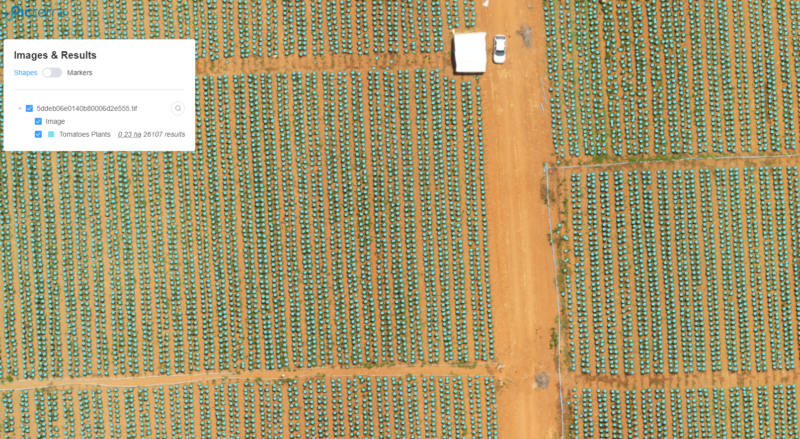
Detecting and counting saplings is another interesting example of using Picterra in agriculture. These tiny young trees are particularly tricky to spot manually on the image because, as you can see in the screenshot below, they’re hard to differentiate from other plants. With Picterra, you only need to annotate a few examples and counterexamples to teach the model how a sapling looks.
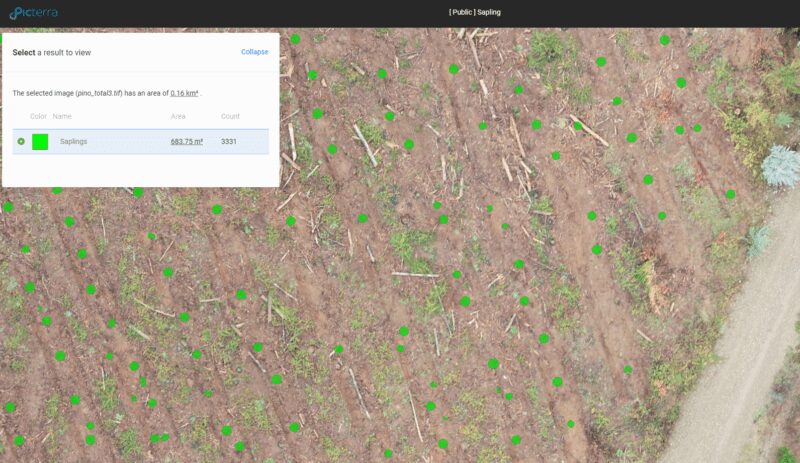
Detecting missing or dead plants
On Picterra, you can detect not only plants but also gaps between them, which is an important indicator of planting quality. It’s challenging to avoid gaps completely – they’re caused by various factors, such as local erosion, pests, heavy machines, and so on. However, analyzing drone imagery make it possible to fill these gaps in the most efficient way. Check this article to read more about detecting gaps in sugarcane crops.
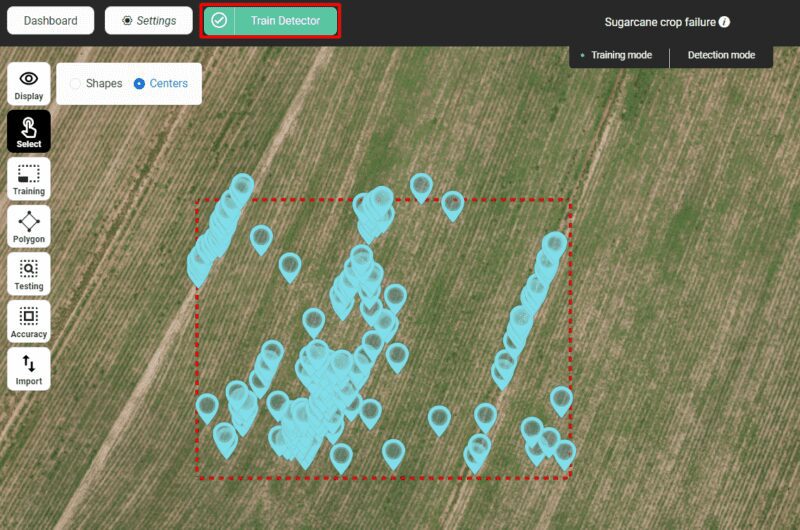
The results of detecting sugarcane gaps on the Picterra platform. Image copyright: Indshine.
Detecting weeds and diseases
Weeds and invasive species are a significant threat to agriculture in terms of productivity and sustainability. They often grow quickly, aggressively compete with the crop and quickly transfer from one field to another. What makes things worse, weeds tend to introduce bacteria and fungi, causing the grower a decrease in harvest yield and income. That’s why it’s crucial to detect them as early as possible to get them efficiently removed from the field. We have already described how an American grower handled this issue with very good results, so check this article about Shuttercane detection to learn more about it.
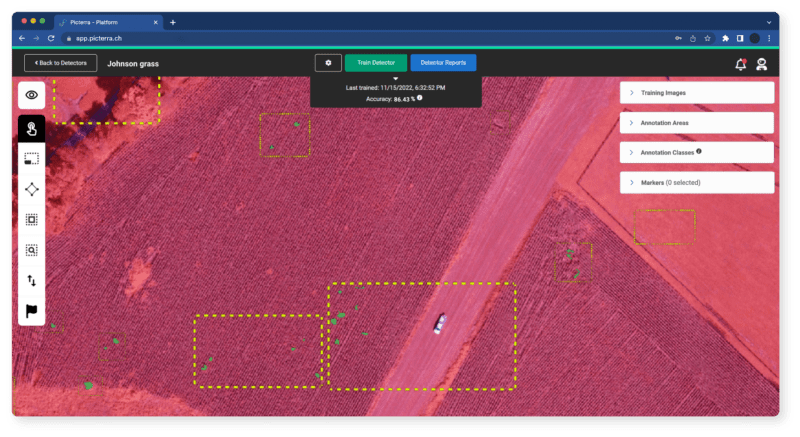
Custom detector for weed detection built on Picterra.
Learn more about weed detection
Yield estimation and improvement
Yield estimation is the key to understand the fields’ productivity. It is related to a set of various parameters, such as crop-specific elements (e.g. grains, fruits, etc.), soil type, weather conditions, leaf area index, etc. In general, software used in precision agriculture allows for analyzing the NDVI (Normalized Difference Vegetation Index) of the yield, it’s not enough in many cases. However, combined with machine learning, growers can get all the necessary details, including identifying, counting, and localizing objects in drone and satellite imagery.
Hungry for more?
Watch the recording of our webinar about precision agriculture!
Time to try it yourself!
- Upload imagery. We facilitate accessing satellite imagery through our portal, but if you need very high-resolution, upload orthophotos to Picterra.
- Train your machine learning model. We’ve covered it in detail in this step-by-step guide on how to build a custom detector, and we recommend reading it before moving on.
- Once your results are ready, you can download them to integrate with other GIS software you may use or generate a PDF report.

